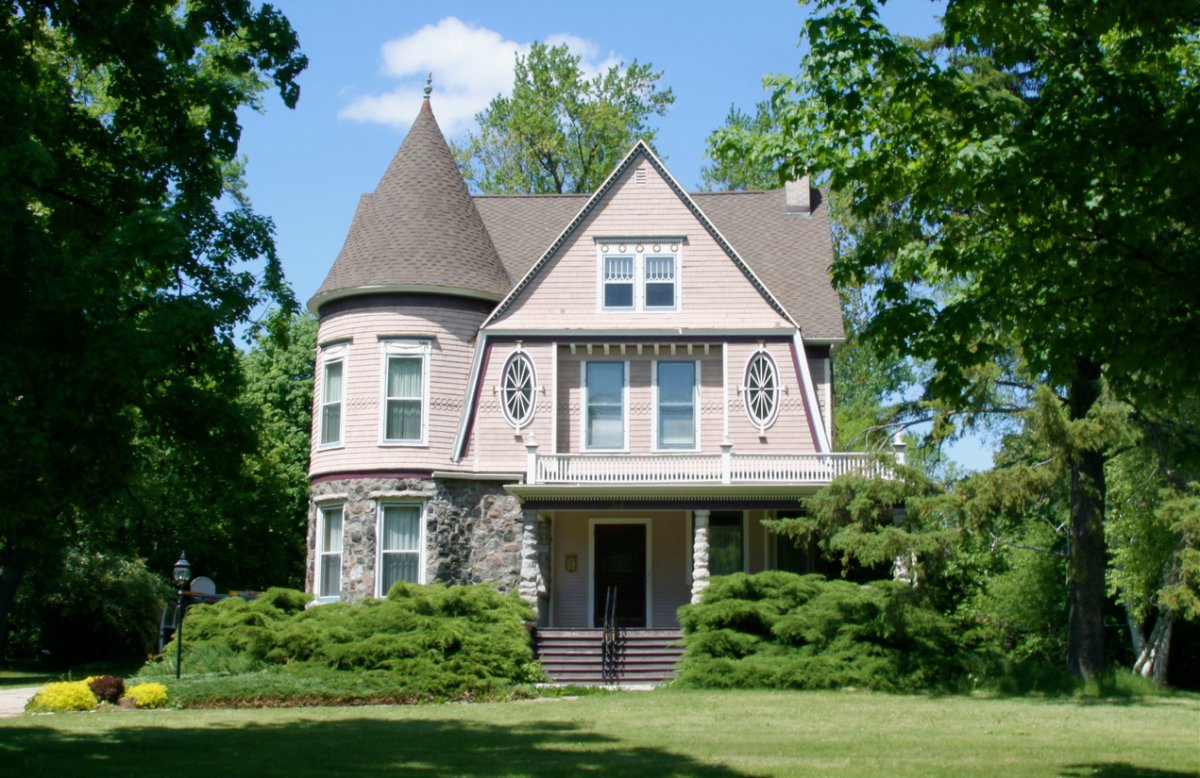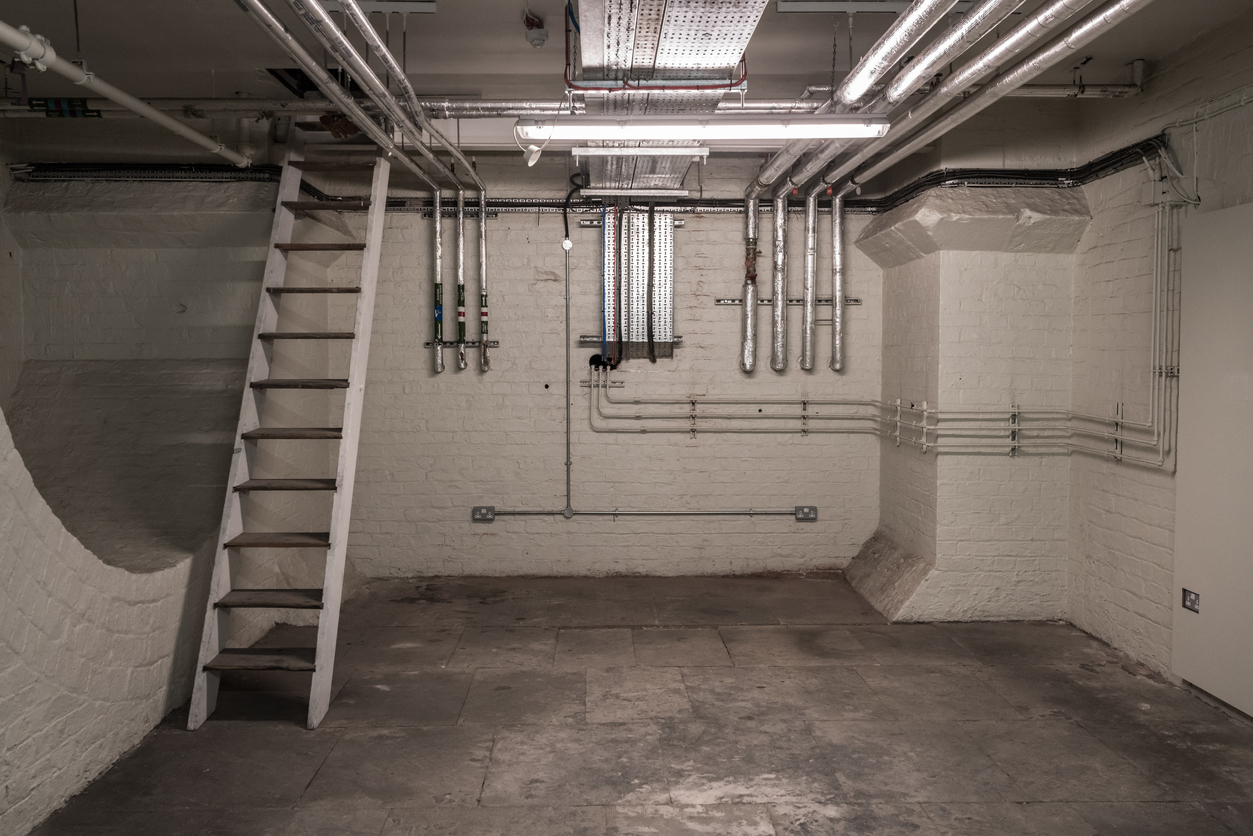

We may earn revenue from the products available on this page and participate in affiliate programs. Learn More ›
Newly built houses must comply with strict design and construction codes, but most of those rules didn’t exist decades ago, which is why older homes often have unique features that can be challenging or seem downright bizarre. Still, old houses are alluring to many. They’re usually less expensive than new homes, and they attract enthusiastic DIYers looking to build sweat equity by updating them. Ahead, discover some of the love-’em-or-hate-’em quirks that can come part and parcel with living in an old house.

Squeaks and Creaks
Forget about quietly sneaking to the kitchen for a midnight snack. Old houses are notoriously noisy—simply walking across a room can cause the hardwood flooring to rub against the subfloor, resulting in creaks loud enough to wake other family members. Fortunately, noisy floors can often be silenced. Try sprinkling a little cornstarch between the floor planks to reduce the wood-against-wood friction that causes the noise.

Steep Stairways
Stairways built recently follow the International Residential Code’s 7:11 rule—the risers can be no more than 7 3/4 inches high, and the treads must be a minimum of 11 inches deep. However, in older houses stairways were built strictly for function, not for safety or ease, so risers and treads can be a variety of sizes. Many historical houses have steep and narrow stairways, some with hard-to-navigate twists and turns. You might find them charming, but don’t plan on taking a king-size bed upstairs anytime soon.

Ghostly Drafts
Even in old houses with updated HVAC systems, drafts are common because it’s challenging to retrofit an old home with balanced ducting and return-air registers. Heat naturally rises, and in an old house, it may flow into an attic or out an upstairs window, which creates a vacuum effect that draws cooler air in from a basement or crawl space. Sealing the lower floor and sealing around the foundation may help somewhat, but old houses are simply not as airtight as new ones, and it’s almost impossible to eliminate all drafts.
RELATED: The Best Door Draft Stoppers to Keep the Cold Out, Tested

Energy-Sucking Windows
Before skyrocketing heating and cooling costs, many old home builders incorporated multiple tall windows for residents to enjoy seeing views. These single-pane windows are part of an old home’s charm, but they’re not energy efficient—cold transfers through in winter and heat transfers in during summer. Installing storm windows can help reduce some of the thermal transfer, but replacing the windows with double- or triple-pane energy-efficient models can make a more noticeable difference.

Banging Water Pipes
Known as “water hammer,” banging pipes result from the hydraulic shock that causes water supply lines to jerk and slam against other pipes or wood framing members in walls and floors when the water is turned off. The noise can be pretty loud and alarming. Still, homeowners may be able to reduce it by insulating around the offending pipes, reducing the water pressure at the meter, or installing a water hammer arrestor, such as the Sioux Chief water hammer arrestor.

Tiny Closets
If you’re looking for a home with a walk-in closet and plenty of room to stow outfits and shoes, you probably won’t find it in an old house. Wardrobes were limited when many of these homes were constructed, and most people had only a few outfits to store. If the bedroom is large enough, you could add a freestanding wardrobe, or if the house has a multitude of small rooms—as many old houses do—consider turning an extra one into a dressing room.
RELATED: The 6 Best Closet Design Companies

Sloping Floors
All homes settle over time, and old houses have had plenty of time to settle, which means you may find that some of the floors slant slightly. Additionally, sometimes the builders didn’t get the floors perfectly level from the start since they didn’t have the precise laser levels today’s contractors use. Just because one or more floors slopes doesn’t mean there’s a structural problem, but you may still want to have a professional inspection to rule out major issues before making an offer on the property.

Milk Doors
That’s not an old-fashioned pet entrance you see on the exterior wall near the front door. It’s a milk door. If the house was built before 1950, there’s a chance the original owners had a milk door installed so the milkman could deliver the milk without leaving it on the porch. Milk doors are one of the more charming quirks in old houses, and some of today’s homeowners use them as mailboxes, newspaper boxes, or even shoe doors.

Confusing Layouts
In an old house, it’s not unusual to walk through one bedroom to get to another bedroom or find the front door opens to a kitchen. Decades ago, homes were designed to the new owner’s specific needs (or whims), and very few gave a thought to whether the layout would please others. While uncomfortable flooring layouts can usually be changed, it may require removing load-bearing walls and installing ceiling beams to support the weight, so it’s not typically a DIY project.

Blinking Bulbs
Flickering lights are a common sign of old wiring. If the wiring has not been updated in the house, it’s not only inadequate for powering today’s appliances, it’s a safety issue and comes with an increased risk of fire. In the short term, consider using lower-watt light bulbs and operating only one device at a time. However, plan to have the wiring updated—and soon.
RELATED: The Best LED Light Bulbs

Coal Chutes
Many older homes were once heated by coal, although most have been updated to gas, oil, or electric furnaces. Coal chutes, some of which feature elaborate designs etched on cast iron doors, can still be found on many old houses. This door is where the coal delivery person would shovel the coal into a chute that led to a coal bin. While decorative and a charming “keeper,” it’s a good idea to seal and insulate the door to keep pests out.
RELATED: 10 Places You Never Knew Pests Were Hiding

Root Cellars
Homeowners a hundred years ago didn’t have the benefit of large-capacity refrigerators. Plus, they couldn’t always obtain all the food they needed from a local market. Root cellars were the next best thing—they were located below ground where it stayed dark and cool. Root crops, such as turnips, potatoes, and carrots could be safely stored for months. Old root cellars may be prone to collapsing, so many homeowners opt to fill them in with sand for safety.
